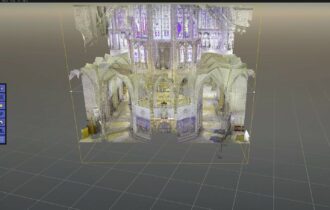
How to apply mixed reality to the energy sector
In the current economic situation, energy companies can save costs through digitization while increasing their efficiency, both in the service offered to customers and in the search for new ways of doing business or optimizing work. And in that sense, mixed reality (virtual and augmented) provides many options to achieve this.
In this article, we explain how mixed reality applies to the energy industry, a sector in search of new sources of production and constant search the cutting edge.
A time of change in the energy sector
There is a growing awareness of the climate emergency and how energy production and consumption influence it. Looking for renewable or non-renewable energy sources has an impact on the environment. Also, installing power plants, wind turbines, oil wells… What if they are placed in the wrong place?
Technologies such as artificial intelligence, machine learning, and the internet of things help to locate these places better. Meanwhile, mixed reality makes it possible to visualize them to confirm that they are the ideal places to find a form of energy cleaner whose exploitation harms the environment as little as possible.
Advantages of mixed reality in the energy sector
The advantages of mixed reality in the energy sector are as follows:
- Reduction of operational costs.
- Faster information exchange (from the environment to the client, between the client and its stakeholders…).
- In this sense, increased collaboration between teams and thus increased productivity.
- Also, more accurate decision-making, with fewer human errors.
- More immersive and engaging employee and customer training. In addition, if equipment or facilities are difficult to operate, digital lessons can make it easier to acquire knowledge.
- Improved plant or machine maintenance and operating efficiency. Monitoring is done virtually, without traveling to an offshore plant or a remote prairie; several facilities can be maintained simultaneously.
- They improve awareness of sensitive issues, such as environmental impact.
- Instruction manuals are overlaid on equipment and tools via tablet or phone.
- Correctness of plants, products, and facilities from the earliest design stages.
- Salespeople in charge of material purchases can see the operation digitally and remotely without the need to travel to factories or offices.
Mixed reality in oil and gas
As we said before, citizens are increasingly concerned about the environment, leading to a greater interest in clean sources and clean energy extraction to have the least possible impact on the environment.
In this sense, for the search for sources of gas and oil, virtual reality, fed by data, artificial intelligence, and machine learning, makes it possible to explore possible deposits and fine-tune drilling.
Repsol Excalibur
Our 3D graphics engine was used to develop Repsol Excalibur, a digital tool that helps improve oil extraction processes by reducing geological risks.
Excalibur is essential for studying greenfield or virgin reservoirs since the industry knows little about them. By analyzing the reservoir properties (rock type, structure, porosity…), a 3D model accessible from a user-friendly interface is built. In this way, the industry saves millions of euros in unsuccessful drilling.
Representing complex phenomena
Finding the right place to drill is a tricky business action where mixed reality helps. Wind power companies are interested in the weather conditions for installing wind turbines and their performance. A digital twin can simulate operation in certain situations.
Energy installations in the environment
Installing a wind farm in the countryside or at sea transforms the perception of a landscape. If a 3D model or digital twin is created before installation, changes can be made so that the environment is not affected.
Evergine and Viawind
Viewing is our 3D simulation tool to make decisions on visual impact. Based on our Evergine industrial graphics engine allows us to simulate day and night luminosity according to the time or the rotation of the wind turbines. This way, it is possible to know how the physical windmills would look on a site.
For this, a panoramic photograph is used, and the horizon line is taken as a reference point for the turbines. Then, the turbines’ size and the blades’ orientation are calculated. This resulted in a digital wind turbine in operation and positioned in the place where it should be.
These are some of the possibilities of mixed reality for the energy sector. But there is still more to explore, and we want to do it with you. If its advantages convince you, let’s work together!


